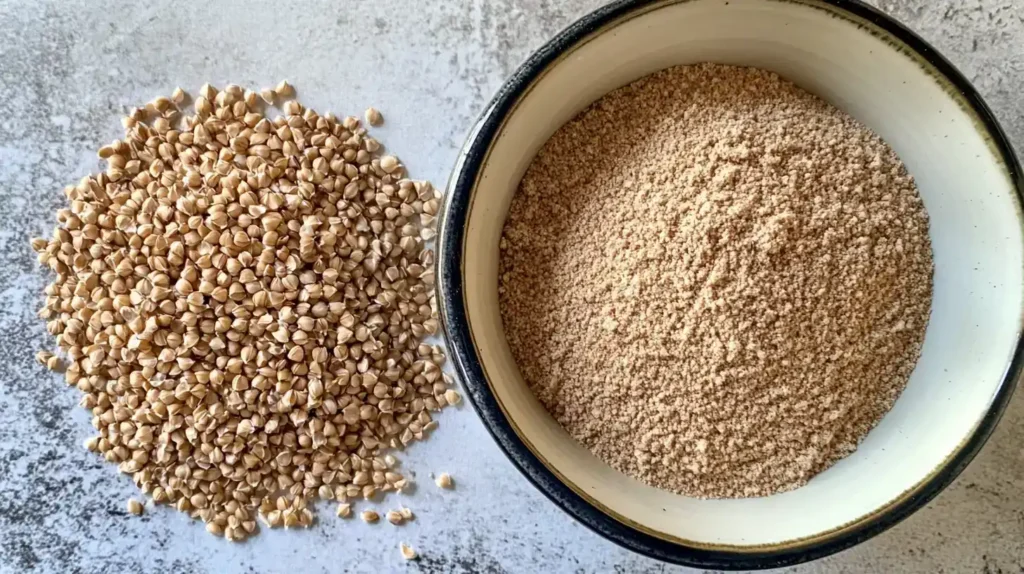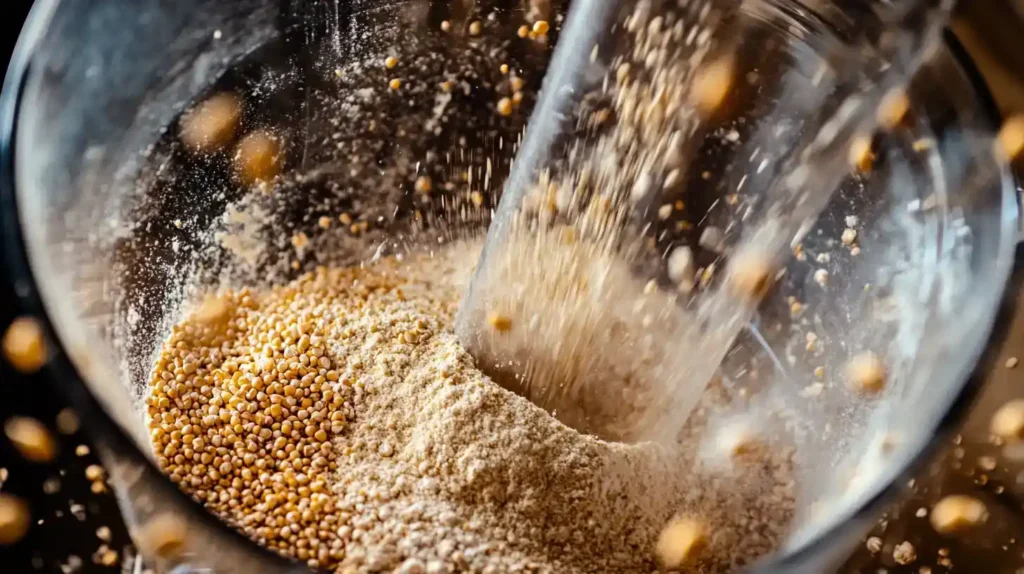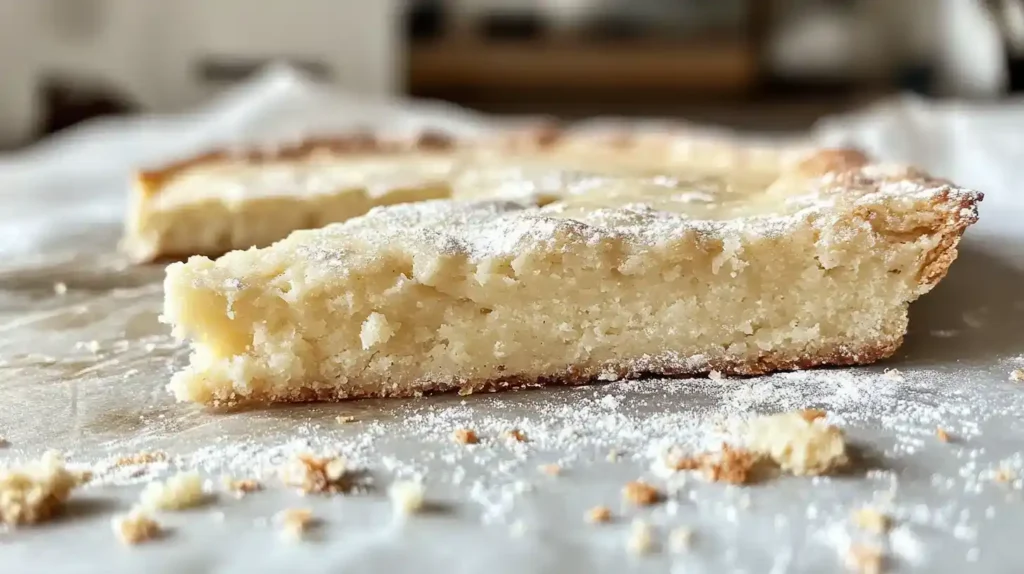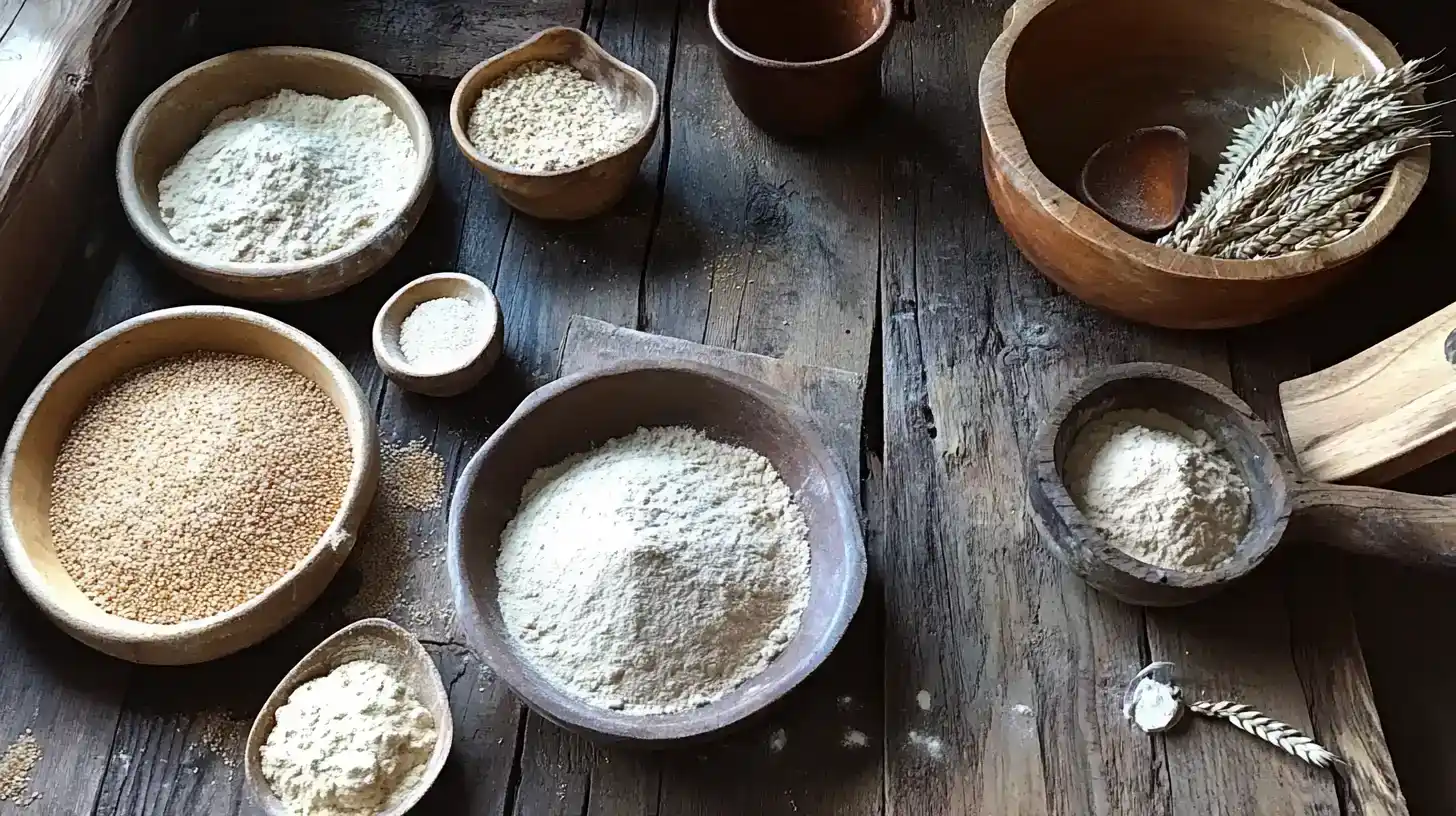What do you do with buckwheat flour? If you’ve been searching for ways to use this nutritious and gluten-free flour, you’re in the right place! Whether you’re making pancakes, bread, cookies, or even noodles, buckwheat flour is a versatile ingredient that can transform your cooking. In this guide, we’ll explore how to use buckwheat flour in your favorite recipes, why it’s becoming a popular choice, and the best tips for getting perfect results every time.
Not only is it perfect for baking, but it’s also a nutritional powerhouse. Packed with fiber, protein, and antioxidants, it supports a balanced diet. Moreover, it’s naturally gluten-free, which makes it a fantastic choice for anyone with celiac disease or gluten sensitivity. But what exactly makes this flour so special? Let’s dive in and explore!
What is Buckwheat Flour?
Is it Really Wheat?
Although the name suggests otherwise, buckwheat flour has no connection to wheat. It is actually made from the seeds of the Fagopyrum esculentum plant. Unlike wheat, it is classified as a pseudo-grain, similar to quinoa or amaranth.
In addition to being gluten-free, buckwheat flour is loaded with nutritional benefits, which makes it a great option for health-conscious individuals.
Why Choose Buckwheat Flour?
There are several reasons why this flour is a great choice:
- It’s naturally gluten-free, which makes it perfect for people who can’t eat wheat.
- It has a nutty flavor that works in sweet and savory dishes.
- It’s full of nutrients like protein, iron, and magnesium.
Additionally, it has a low glycemic index. This means it helps keep blood sugar levels steady, which is especially helpful if you have diabetes.
Nutritional Profile of Buckwheat Flour
This flour is not just a wheat substitute—it’s a true superfood. Consider the following benefits:
- It is high in fiber, promoting better digestion.
- It contains essential minerals like iron, magnesium, and calcium.
- Its low glycemic index helps regulate blood sugar levels.
- It is naturally rich in protein, making it ideal for those looking to maintain muscle mass.
What Makes Buckwheat Flour Unique?
Why Make Buckwheat Flour Yourself?
Buying pre-made buckwheat flour can be convenient, but making it at home has many benefits:
- Cost-Effective: Raw buckwheat groats are often cheaper than ready-made flour.
- Freshness: Homemade it is fresher, which enhances its taste and nutrition.
- Customization: You can control the texture, whether you prefer it fine for baking or slightly coarse for bread and pancakes.
Moreover, if you enjoy cooking, grinding your own flour adds a personal touch to your recipes.

Step-by-Step Guide to Making Buckwheat Flour
Choose the Right Buckwheat Groats
- Use hulled buckwheat groats, which are light-colored and free of the hard, dark outer shell.
- Make sure they are clean and free of dust or debris.
Prepare Your Equipment
- You’ll need a high-speed blender, food processor, or grain mill. A regular blender may work but might require extra blending time.
Blend the Groats
- Add a small amount of groats (about one cup) to your blender. This prevents overheating and ensures even grinding.
- Use the pulse function to break down the groats into a powder. Then blend continuously until the texture becomes fine and smooth.
Sift the Flour
- To ensure a uniform texture, sift the flour using a fine mesh sieve.
- Return any larger bits to the blender for additional grinding.
Store the Flour
- Transfer the flour to an airtight container to keep out moisture.
- Store it in a cool, dry place like a pantry or refrigerator. Homemade buckwheat flour stays fresh for up to a month when stored properly.
Pro Tips for Perfect Homemade Flour
- Use Small Batches: Grinding too much at once can strain your blender, making it less effective.
- Test the Texture: For recipes like pancakes, a fine flour works best, while slightly coarse flour is great for hearty bread.
- Freeze for Longer Storage: If you don’t plan to use it right away, store it in the freezer to extend its shelf life.
Why Homemade Flour is Worth the Effort
Making it yourself gives you full control over the quality and freshness. Additionally, it’s a rewarding way to connect with your food and add a homemade touch to your meals. The process is simple, quick, and ensures you always have a ready supply for baking or cooking.
How to Use Buckwheat Flour in Cooking
Why Use Buckwheat Flour in Cooking?
It is a versatile ingredient that works in both sweet and savory recipes. It has a unique nutty flavor and pairs well with other flours. Since it’s gluten-free, it’s perfect for those who can’t eat wheat. Additionally, its dense texture makes it ideal for hearty dishes like pancakes, flatbreads, and cookies.
However, it’s important to learn how to use it correctly to get the best results in your cooking and baking.

General Tips for Using Buckwheat Flour
1. Mix It with Other Flours
Because buckwheat flour is dense, it works better when combined with lighter flours. For example:
- Mix it with rice flour for gluten-free baked goods.
- Combine it with tapioca starch for better elasticity in recipes.
- Use it with almond flour for extra protein and moisture.
2. Adjust Liquids in Recipes
It absorbs more liquid than regular flour, so you may need to add a little extra milk, water, or oil to your recipes. Start with small adjustments and test the batter’s consistency.
3. Use Binding Agents
Since it doesn’t contain gluten, you’ll need a binder to help hold your dishes together. Try these options:
- Eggs: Great for pancakes, muffins, and bread.
- Flaxseed meal: Mix one tablespoon with three tablespoons of water as an egg replacement.
- Psyllium husk powder: Adds elasticity, especially in bread recipes.
Best Recipes for Buckwheat Flour
Breakfast Ideas
One of the easiest ways to enjoy buckwheat flour is by making pancakes. These protein blueberry pancakes are a delicious and healthy option. They’re packed with nutrients and perfect for starting your day.
Sweet Recipes
- Buckwheat Pancakes: Light and fluffy, these pancakes are perfect for breakfast.
- Banana Bread: A moist and naturally sweet treat for snacking.
- Chocolate Cookies: Chewy and rich, with a subtle nutty flavor.
Savory Recipes
- Buckwheat Crepes: Ideal for wrapping sweet or savory fillings.
- Pizza Crust: A crispy and gluten-free alternative to traditional dough.
- Flatbread: Pair it with dips or use it as a base for sandwiches.
Substituting Buckwheat Flour in Recipes
Can You Replace All-Purpose Flour with Buckwheat Flour?
Yes, but it’s not a 1:1 swap. Here are some tips:
- Replace 50% to 75% of the wheat flour with buckwheat flour for best results.
- Add extra liquid to compensate for its absorbent nature.
- Combine it with a second flour for a lighter texture.
Examples of Using Buckwheat Flour
- Bread Recipes: Combine buckwheat flour with tapioca starch and psyllium husk for a soft, gluten-free loaf.
- Pancake Batter: Use a mix of buckwheat flour and almond flour for extra fluffiness.
- Homemade Noodles: Make traditional Japanese soba noodles using pure buckwheat flour and water.
Cooking with Confidence
Once you understand how to use buckwheat flour, it becomes a fantastic addition to your pantry. From baked goods to savory dishes, it’s easy to create healthy, delicious meals.
Best Recipes Using Buckwheat Flour
1. Buckwheat Flour Pancakes
Start your morning with light and fluffy buckwheat pancakes. These are easy to make and pair well with your favorite toppings.
Ingredients:
- 1 cup buckwheat flour
- 1 egg (or flax egg for vegan)
- 1 cup milk (dairy or non-dairy)
- 1 tbsp honey or maple syrup
- 1 tsp baking powder
Instructions:
- Combine all ingredients until smooth.
- Next, pour the batter onto a hot griddle.
- Cook for about 2-3 minutes per side, and enjoy with fresh fruits and maple syrup.
2. Buckwheat Flour Pizza Crust
For those who love pizza but need a gluten-free option, this crust is perfect. It’s easy to make, and you can customize it with your favorite toppings.
Simply mix buckwheat flour with water, olive oil, and a pinch of salt. Then, roll it out and pre-bake for about 10 minutes. After that, add your toppings and return it to the oven until crispy.
3. Buckwheat Flour Banana Bread
If you love banana bread, you’ll adore this healthier twist. Soft and moist, it’s a delightful treat that’s also nutrient-dense.
Pro tips:
- Use ripe bananas for natural sweetness.
- Add mix-ins like chocolate chips or walnuts for extra flavor.
Bake at 350°F (175°C) for about 45 minutes, or until a toothpick comes out clean.
Tips for Baking with Buckwheat Flour
Why Baking with Buckwheat Flour is Different
Baking with buckwheat flour can be a bit tricky at first. Unlike wheat flour, it’s denser, absorbs more liquid, and doesn’t have gluten to bind the ingredients. However, with a few simple tips, you can create baked goods that are just as fluffy, moist, and delicious as those made with traditional flour.
Top Tips for Baking with Buckwheat Flour
1. Combine with Other Flours
Since buckwheat flour is dense, mixing it with other flours can help balance the texture. For example:
- Combine it with rice flour for a light, airy texture.
- Use almond flour to add moisture and flavor.
- Pair it with tapioca starch to improve elasticity.
A good ratio is to use 50-75% buckwheat flour and the rest from a lighter flour.
2. Use Binding Agents
Without gluten, baked goods made with buckwheat flour can crumble. To avoid this, use natural binders like:
- Eggs: These work best in cakes, muffins, and cookies.
- Flaxseed Meal: Combine one tablespoon of flaxseed meal with three tablespoons of water for an egg replacement.
- Psyllium Husk Powder: A great option for gluten-free bread.
3. Adjust Liquid Amounts
Buckwheat flour absorbs more liquid than wheat flour, which can make your batter too thick. To fix this, simply increase the liquid slightly. Add an extra 1-2 tablespoons of milk, water, or oil to achieve the desired consistency.
4. Sift the Flour
Because buckwheat flour can clump, sifting it before mixing helps create a smoother batter. This is especially important for cakes and cookies where texture matters most.
5. Add Flavor Enhancers
While it has a pleasant nutty flavor, it can taste earthy in some recipes. Enhance the flavor by:
- Adding a splash of vanilla extract.
- Using spices like cinnamon or nutmeg.
- Mixing in sweeteners like honey or maple syrup.
Why These Tips Matter
By understanding how it behaves in baking, you can ensure your recipes turn out perfectly every time. With these tips, your baked goods will be delicious, gluten-free, and full of flavor.
Mistakes to Avoid When Using Alternative Flours
Why Some Recipes Turn Out Dry (and How to Fix It)
Although it is versatile and healthy, it’s not a direct replacement for wheat flour. Many common errors occur when people assume it behaves the same way as traditional flours. Understanding these mistakes can save you time, effort, and frustration in the kitchen.
Common Baking Errors and Their Easy Solutions
1. Substituting 1:1 for Wheat Flour
One of the biggest mistakes is using it as a direct substitute for all-purpose flour.
- Why it’s a problem: it is denser and doesn’t have gluten, which means it won’t provide the same structure or lightness as wheat flour.
- Solution: Always combine it with other flours or adjust the ratios in your recipes.
2. Skipping a Binder
Because it lacks gluten, baked goods can crumble if you don’t add a binder.
- Why it’s a problem: Gluten acts as glue, holding ingredients together. Without it, your cookies or bread might fall apart.
- Solution: Use eggs, flaxseeds, or psyllium husk powder to create a stable texture.
3. Not Adjusting Liquid Levels
Another mistake is sticking to the liquid measurements from a wheat-based recipe.
- Why it’s a problem: it absorbs more liquid than wheat flour, leading to dry or stiff batters.
- Solution: Increase the liquid content slightly, adding it gradually until the batter reaches the right consistency.
4. Ignoring Sifting
Many people skip sifting their buckwheat flour.
- Why it’s a problem: Buckwheat tends to clump, which can result in uneven mixing and lumpy batters.
- Solution: Always sift buckwheat flour before using it, especially in delicate recipes like cakes or crepes.
5. Overusing Buckwheat Flour
Using only it in recipes can lead to heavy and dense results.
- Why it’s a problem: While it has a rich flavor, too much of it can overwhelm the dish.
- Solution: Pair it with lighter flours, like rice or almond flour, to balance the texture and flavor.
Why Learning From Mistakes Is Helpful
Mistakes are part of learning, especially when working with gluten-free flours. By avoiding these pitfalls, you’ll feel more confident using it. Plus, your recipes will turn out better every time!

FAQs About Buckwheat Flour
1. Can I use it instead of all-purpose flour?
Yes, but it’s best when mixed with other flours.
2. Is it healthier than regular flour?
Absolutely! It is higher in fiber and protein, plus it contains more essential minerals.
3. Can you make bread with buckwheat flour?
Yes, although combining it with other gluten-free flours will yield better texture and rise.
Final Thoughts
So, what do you do with it? As you’ve seen, this gluten-free superfood is incredibly versatile. Whether you’re making breakfast, dinner, or dessert, it is a wonderful addition to any kitchen.
Not only is it nutritious, but it’s also a great way to experiment with healthier, gluten-free cooking. So why not try one of these recipes today? Once you get started, you’ll see just how amazing buckwheat flour can be!

